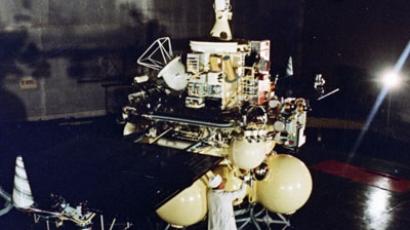Beam me up: Martian probe responds to Aussie call

A Russian space probe bound for a Martian moon, which for two weeks had been gradually falling and failing to respond to communication, has finally answered a signal from a ground station in Australia.
The Phobos-Grunt was thought doomed. But this gives hope that the 17-ton spacecraft may not be lost. Its original mission was to collect samples from the Red Planet’s moon Phobos, and bring them back to Earth.The European Space Agency’s station in Australia’s Perth successfully established contact with in a last-ditch attempt to receive new data from the probe. “The signal was not sent arbitrarily, but because a command to activate a certain transmitter was sent to the probe. And it was executed. So it [the probe] responded to at least one command. That is much better than if they had received a random signal,” Igor Lisov from Space News magazine told RT.The signal sent by the probe was a simple beep. It was put out by the spacecraft itself, not its engine block. This confirms that the vehicle is powered and active, which was earlier in some doubt.Russian specialists are now analyzing the data and preparing for a new experiment with other space agencies to get the Phobos-Grunt to send some more complex data. This would hopefully shed light on what exactly went wrong after its launch on November 8, UTC (November 9, 00:11 Moscow time).The next step would be to raise the orbit of the gradually falling probe. This would give more control options to the engineers.Even if the probe is brought back under control, the time window for its Martian mission is now closed. It could theoretically be sent towards Mars, but wouldn’t be able to land on Phobos.It could yet prove scientifically valuable though. Some of the experiments the probe’s mission includes don’t require it to land on the Red Planet’s satellite. For instance the Phobos LIFE, which tests how the interplanetary environment affects living microorganisms, simply requires the probe to spend 3 years far from Earth’s protective magnetic field. The destination could even be Earth’s Moon, rather than a Martian one.More importantly, many parts of the Phobos-Grunt are new, and didn’t undergo space tests before being used on the craft. The mission was to be a test for this equipment, and telemetry data from the probe will allow engineers to see how well it performed. If this works, the mission could be called at least partially successful, not the embarrassing disaster it was until now.














